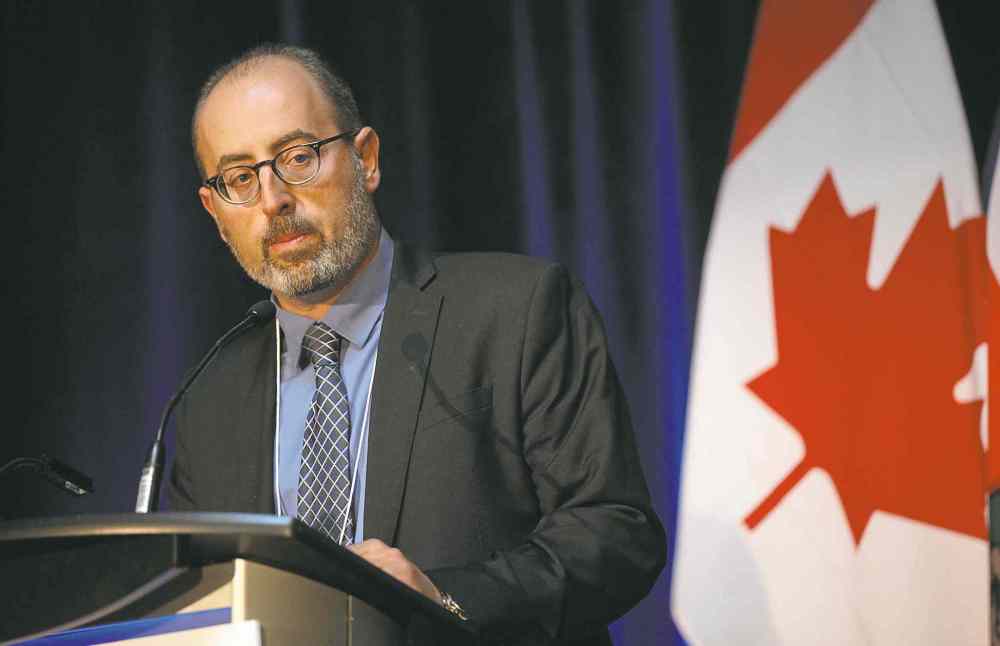Poor at higher risk of bankruptcy: report
Debunks belief middle class more at risk of insolvency because of debt
Advertisement
Read this article for free:
or
Already have an account? Log in here »
To continue reading, please subscribe:
Monthly Digital Subscription
$1 per week for 24 weeks*
- Enjoy unlimited reading on winnipegfreepress.com
- Read the E-Edition, our digital replica newspaper
- Access News Break, our award-winning app
- Play interactive puzzles
*Billed as $4.00 plus GST every four weeks. After 24 weeks, price increases to the regular rate of $19.00 plus GST every four weeks. Offer available to new and qualified returning subscribers only. Cancel any time.
Monthly Digital Subscription
$4.75/week*
- Enjoy unlimited reading on winnipegfreepress.com
- Read the E-Edition, our digital replica newspaper
- Access News Break, our award-winning app
- Play interactive puzzles
*Billed as $19 plus GST every four weeks. Cancel any time.
To continue reading, please subscribe:
Add Free Press access to your Brandon Sun subscription for only an additional
$1 for the first 4 weeks*
*Your next subscription payment will increase by $1.00 and you will be charged $16.99 plus GST for four weeks. After four weeks, your payment will increase to $23.99 plus GST every four weeks.
Read unlimited articles for free today:
or
Already have an account? Log in here »
Hey there, time traveller!
This article was published 07/04/2015 (3838 days ago), so information in it may no longer be current.
Poor Winnipeggers have almost no consumer debt but still live close to bankruptcy, while many of the city’s wealthy spend more than they make.
That’s the finding of a new report on debt released Monday by the University of Winnipeg’s Institute of Urban Studies. Researchers there crunched data on consumer debt such as credit cards, car loans and lines of credit as well as bankruptcy risk and mapped the data based on postal codes. The data comes from TransUnion, a credit-management company that tracks credit reports and scores and is one of the data sources researchers are mining since the mandatory long-form census was abolished.
The IUS found residents in neighbourhoods such as the North End and West End have low debt levels but a high risk of declaring bankruptcy in the next 18 months, in part because they live paycheque to paycheque with no cushion. Meanwhile, wealthier neighbourhoods such as Tuxedo, Wellington Crescent and Whyte Ridge carried, on average, heftier debt because higher incomes allowed households to borrow more. Their short-term bankruptcy risk is generally low.

Those findings belie the common belief it’s middle-class people living lavish lives they can’t afford who are at the biggest risk of insolvency.
“This may suggest that bankruptcy risk is associated with lower income, not higher spending,” said the report.
But, warned IUS director Jino Distasio, a period of low interest rates has kept mortgage payments low and allowed households to take on more credit card debt. If interest rates spike, the bankruptcy risk in Winnipeg’s bedroom communities could also spike.
Distasio and Jerry Buckland, dean of Menno Simons College and an expert on the banking needs of the poor, say the report also points to a surprising upside to Winnipeg’s growing income disparity — the poor may be much better money managers.
With virtually no access to credit, Buckland said low-income people develop good money-management skills middle-class people often lack, mentally earmarking every dollar and planning carefully.
“You become pretty good at managing nothing,” agreed Distasio.
You become pretty good at managing nothing’
— IUS director Jino Distasio, of low-income people who develop good money-management skills middle-class people often lack
In William Whyte, in the heart of the North End, residents would only need between 44 and 51 per cent of their annual disposable incomes to pay off all their consumer debt. Meanwhile, the debt-to-income ratios in many wealthier suburbs are worryingly high. People in neighbourhoods such as Sage Creek and central and south Tuxedo carry consumer debt worth 83 to 123 per cent of their disposable income.
But Buckland cautioned the poor often rely on a different sort of debt that may not be reflected in the data — high-interest payday loans and borrowing from friends and family.
maryagnes.welch@freepress.mb.ca

